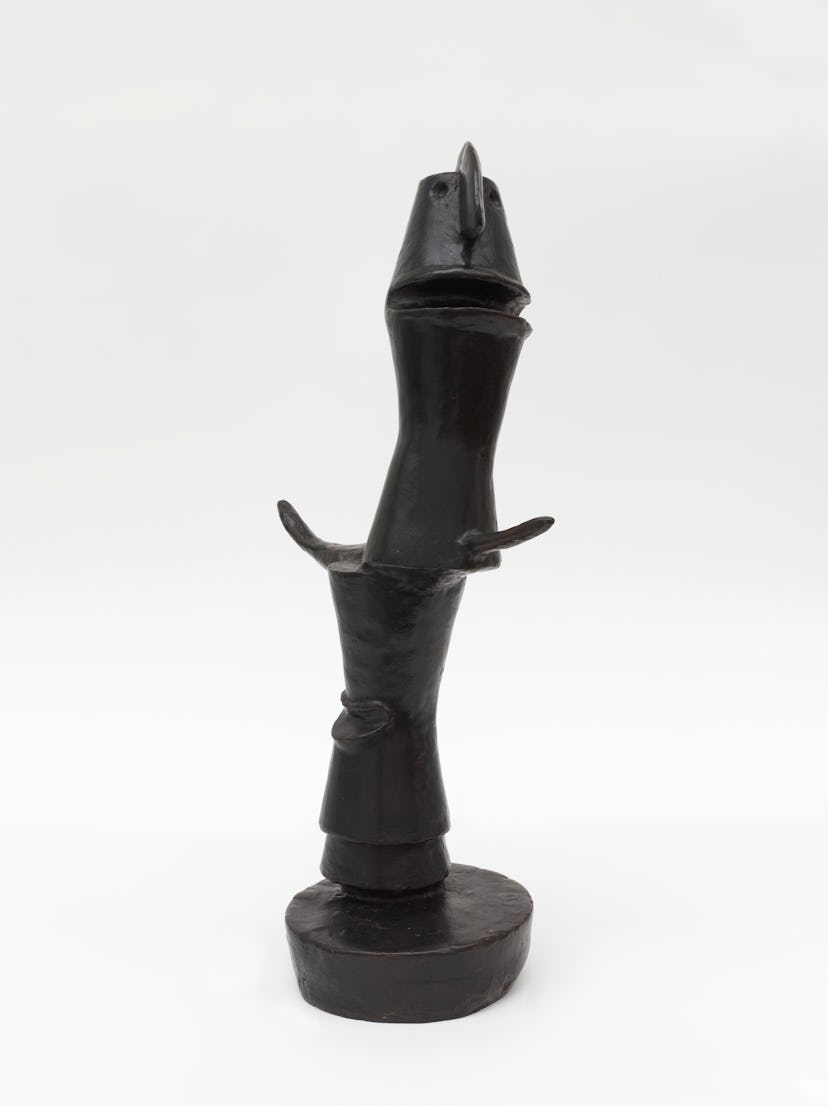The Importance of Being Ernst

When it comes to the 20th century, Max Ernst’s presence could be felt everywhere, from the radical women he married (Peggy Guggenheim, Dorothea Tanning) to the radical art movements to which his name became wedded (Dada, Surrealism). He had a talent that was so shifty and chameleonic that it frustrated observers who wanted him to just please sit still; but it also means that there remain areas to his career still ripe for discovery. So while sculpture was never what made Ernst’s reputation, he was in reality quite prolific with bronze and stone, as the late artist’s first U.S. exhibition of sculpture in over two decades—at New York’s Paul Kasmin gallery—reveals. And if we’ve learned anything from the current Picasso sculpture show at MoMA, it’s that a great artist’s secondary love could turn out to be quite a beauty.
“Paramyths: Sculpture, 1934 – 1967” is on view through December 5 at New York’s Paul Kasmin gallery, 515 W. 27th St.
Photos: The Importance of Being Ernst
Max Ernst Chess Set. Courtesy of gallery.
Jeune femme en forme de fleur, 1944. Courtesy of gallery.
Bosse de Nage, 1959. Courtesy of gallery.
Oedipe I, 1934. Courtesy of gallery.